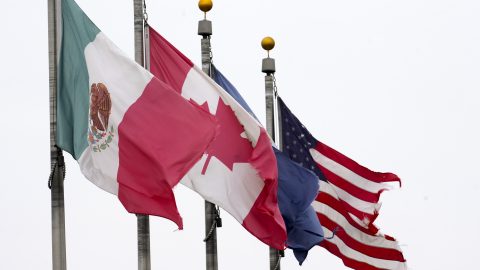
US banks report good and bad developments in the financial sector
On Wall Street, reporting season traditionally kicked off with the reports of the largest US banks. Their results for the final quarter of 2019 give a good impression of how the previous year went on the financial markets. They also reveal interesting trends for investors, which is a good reason to get an overview of the start of the reporting season. All in all, the quarterly results paint a differentiated picture of the US financial sector, with some financial institutions posting record profits and others feeling the challenges facing the sector more strongly.

Low interest rates and legal disputes put a damper on results
After the US Federal Reserve cut key interest rates three times in the previous year, the low interest rates caused problems for the banks. This affected finance corporation Wells Fargo, among others. Its revenues fell by 5 per cent to USD 9.9bn in Q4, while profits decreased to USD 2.9bn, a reduction of more than half year-on-year. Wells Fargo added USD 1.5bn in provisions to prepare for the consequences of ongoing legal disputes. The results of erstwhile industry leader Goldman Sachs, which posted profits of USD 8.5bn for the full year 2019 (after USD 10.5bn in 2018), were also affected by expenditures for legal disputes, while the Bank of America saw its profits in retail banking decline by almost 10 per cent in Q4 alone. BoA explicitly cited the decline in net interest income as the reason for this.
Bond business booming
Strong bond business provided a ray of hope. Morgan Stanley, for example, reported a record profit for the quarter. According to Morgan Stanley, income from bond trading fees actually doubled compared with the same quarter of the previous year. For the full year, net income from shareholders rose by 4 per cent to USD 8.5bn, exceeding average analyst expectations. After opening its books last Thursday, Morgan Stanley’s shares closed up a whopping 6 per cent, helping to propel the S&P 500 benchmark index to a new record high.
In addition to high income from bond trading, the successful banks reported good business with private customers despite lower interest rates, as the robust US economy purportedly kept American consumer spending buoyant. Citigroup attributes a good part of its 8 per cent increase in profits for the full year to USD 19.4bn to the spending propensity of credit card customers.
Fed sees continued moderate growth
The general conditions for banking businesses in the US are unlikely to change much this year. On the one hand, the Fed assumes that interest rates will remain low due to low inflation. On the other hand, the US’s central bank expects the economy to continue to grow moderately and consumer spending to increase slightly. This is evident from the current economic report, which the Fed published in the course of the previous week#s banking results.
Legal note:
Prognoses are no reliable indicator for future performance.
Legal disclaimer
This document is an advertisement. Unless indicated otherwise, source: Erste Asset Management GmbH. The language of communication of the sales offices is German and the languages of communication of the Management Company also include English.
The prospectus for UCITS funds (including any amendments) is prepared and published in accordance with the provisions of the InvFG 2011 as amended. Information for Investors pursuant to § 21 AIFMG is prepared for the alternative investment funds (AIF) administered by Erste Asset Management GmbH pursuant to the provisions of the AIFMG in conjunction with the InvFG 2011.
The currently valid versions of the prospectus, the Information for Investors pursuant to § 21 AIFMG, and the key information document can be found on the website www.erste-am.com under “Mandatory publications” and can be obtained free of charge by interested investors at the offices of the Management Company and at the offices of the depositary bank. The exact date of the most recent publication of the prospectus, the languages in which the fund prospectus or the Information for Investors pursuant to Art 21 AIFMG and the key information document are available, and any other locations where the documents can be obtained are indicated on the website www.erste-am.com. A summary of the investor rights is available in German and English on the website www.erste-am.com/investor-rights and can also be obtained from the Management Company.
The Management Company can decide to suspend the provisions it has taken for the sale of unit certificates in other countries in accordance with the regulatory requirements.
Note: You are about to purchase a product that may be difficult to understand. We recommend that you read the indicated fund documents before making an investment decision. In addition to the locations listed above, you can obtain these documents free of charge at the offices of the referring Sparkassen bank and the offices of Erste Bank der oesterreichischen Sparkassen AG. You can also access these documents electronically at www.erste-am.com.
Our analyses and conclusions are general in nature and do not take into account the individual characteristics of our investors in terms of earnings, taxation, experience and knowledge, investment objective, financial position, capacity for loss, and risk tolerance. Past performance is not a reliable indicator of the future performance of a fund.
Please note: Investments in securities entail risks in addition to the opportunities presented here. The value of units and their earnings can rise and fall. Changes in exchange rates can also have a positive or negative effect on the value of an investment. For this reason, you may receive less than your originally invested amount when you redeem your units. Persons who are interested in purchasing units in investment funds are advised to read the current fund prospectus(es) and the Information for Investors pursuant to § 21 AIFMG, especially the risk notices they contain, before making an investment decision. If the fund currency is different than the investor’s home currency, changes in the relevant exchange rate can positively or negatively influence the value of the investment and the amount of the costs associated with the fund in the home currency.
We are not permitted to directly or indirectly offer, sell, transfer, or deliver this financial product to natural or legal persons whose place of residence or domicile is located in a country where this is legally prohibited. In this case, we may not provide any product information, either.
Please consult the corresponding information in the fund prospectus and the Information for Investors pursuant to § 21 AIFMG for restrictions on the sale of the fund to American or Russian citizens.
It is expressly noted that this communication does not provide any investment recommendations, but only expresses our current market assessment. Thus, this communication is not a substitute for investment advice.
This document does not represent a sales activity of the Management Company and therefore may not be construed as an offer for the purchase or sale of financial or investment instruments.
Erste Asset Management GmbH is affiliated with the Erste Bank and austrian Sparkassen banks.
Please also read the “Information about us and our securities services” published by your bank.



